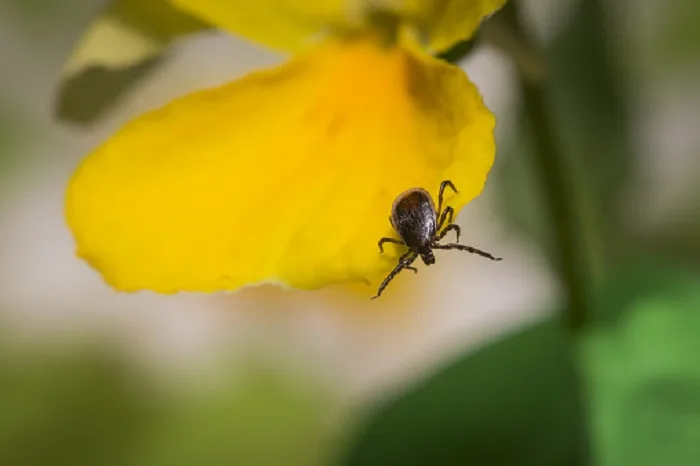
Summer brings an increased risk of Lyme disease. Here's what you need to know
The ticks are out there. Here's what you need to know.
Lyme disease.
It's becoming an increasing concern for Canadians during the spring and summer when ticks are their most active.
Lyme disease is contracted through tick bites -- but not all of them. There According to CanLyme, there are 40 species of ticks in Canada but only two of them carry Lyme disease.
The ones you want to watch out for are the blacklegged (deer) ticks, scientifically known as, Ixodes scapularis, which are predominantly found in southeastern and south-central Canada, as well as the Ixodes pacificus tick which are found in British Columbia.

3D rendering of a male and female deer tick (Ixodes scapularis). Courtesy: Wikipedia.
B.C's version of the deer tick, Ixodes pacificus, looks similar. Like the western Canada deer ticks, B.C.'s female deer ticks are larger than males and have orange colouring, while males are smaller and are more uniform in colour.
Blacklegged ticks are most often found in wooded areas, shrubs, and tall grass. But tick populations are spreading, so it's possible to be bitten anywhere, even in your local dog park.
PREVALENCE OF LYME DISEASE
Lyme disease more common in the eastern parts of Canada and the northeastern U.S. when compared to B.C.
Ontario typically sees 4.3 cases of Lyme disease per 100,000 people.
In the northeastern United States, there are about 29 cases per 100,000 people
In B.C., health officials typically see 0.5 cases of Lyme disease per 100,000 people. The provincial hotspots are in south-western B.C.

File photo: Getty Images.
LESSEN YOUR RISK
When heading outside, experts say you can lessen the risk of contracting Lyme disease by:
Using insect repellent that contains DEET or Icaridin.
Staying on cleared paths and avoid tramping through long grasses or brushy areas.
Cover up when you’re out for a hike or walking in a wooded or grassy area.
Wear light-coloured clothing. Also, consider wearing long sleeves and pants and tuck your shirt into your pants and your pants into your socks.
Check yourself, your children, and your pets after a hike or walk in wooded or grassy areas. Make sure you do a full-body check -- especially in the hair, under the arms, in and around the ears, the belly button, behind the knees and between the legs.
Shower or bathe within two hours of being outdoors so you can check for ticks and remove ticks that have not attached yet.
If you find a tick, use tweezers to immediately remove it by grabbing onto its head and pulling it straight out.
Wash the bite with soap and water or an alcohol-based sanitizer.
If you don’t feel well, contact your health care provider and tell them you have been bitten by a tick.
Keep the tick in a closed container and bring it to your health care provider.
Put dry outdoor clothes in a dryer on high heat for 10 minutes to kill any remaining ticks.
VIDEO: PETS AND TICKS
NO REALLY, TAKE A SHOWER
It seems like a small thing, but research suggests taking a shower within two hours of returning indoors can reduce the risk of Lyme disease by up to 58 per cent.
A 2010 study from the Yale School of Medicine tracked 716 people in 24 Connecticut towns.
In addition to the 58 per cent reduction in Lyme disease from bathing, researchers found people who routinely did body checks after returning indoors were up to 45 per cent less likely to contract the disease.
“There have been so many recommended Lyme disease prevention measures, ranging from personal protection to tick-safe landscaping and chemical control,” lead author Neeta Connally said at the time the paper was published.
“When presented with so many recommendations, it may be hard for the public to know which measures to use. It can be overwhelming. We are encouraged that the effective prevention measures that we’ve identified – bathing and performing daily tick checks - are ones that are inexpensive and require minimal effort to carry out.”










